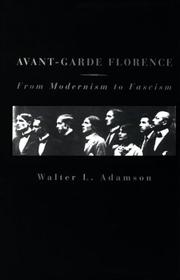| Listing 1 - 3 of 3 |
Sort by
|
Book
ISBN: 1477300678 Year: 1993 Publisher: Austin : University of Texas Press,
Abstract | Keywords | Export | Availability | Bookmark
 Loading...
Loading...Choose an application
- Reference Manager
- EndNote
- RefWorks (Direct export to RefWorks)
Archaism, an international artistic phenomenon from early in the twentieth century through the 1930s, receives its first sustained analysis in this book. The distinctive formal and technical conventions of archaic art, especially Greek art, particularly affected sculptors—some frankly modernist, others staunchly conservative, and a few who, like American Paul Manship, negotiated the distance between tradition and modernity. Susan Rather considers the theory, practice, and criticism of early twentieth-century sculpture in order to reveal the changing meaning and significance of the archaic in the modern world. To this end—and against the background of Manship’s career—she explores such topics as the archaeological resources for archaism, the classification of the non-Western art of India as archaic, the interest of sculptors in modem dance (Isadora Duncan and Ruth St. Denis), and the changing critical perception of archaism. Rather rejects the prevailing conception of archaism as a sterile and superficial academic style to argue its initial importance as a modernist mode of expression. The early practitioners of archaism—including Aristide Maillol, André Derain, and Constantin Brancusi—renounced the rhetorical excess, overrefined naturalism, and indirect techniques of late nineteenth-century sculpture in favor of nonnarrative, stylized and directly carved works, for which archaic Greek art offered an important example. Their position found implicit support in the contemporaneous theoretical writings of Emmanuel Löwy, Wilhelm Worringer, and Adolf von Hildebrand. The perceived relationship between archaic art and tradition ultimately compromised the modernist authority of archaism and made possible its absorption by academic and reactionary forces during the 1910s. By the 1920s, Paul Manship was identified with archaism, which had become an important element in the aesthetic of public sculpture of both democratic and totalitarian societies. Sculptors often employed archaizing stylizations as ends in themselves and with the intent of evoking the foundations of a classical art diminished in potency by its ubiquity and obsolescence. Such stylistic archaism was not an empty formal exercise but an urgent affirmation of traditional values under siege. Concurrently, archaism entered the mainstream of fashionable modernity as an ingredient in the popular and commercial style known as Art Deco. Both developments fueled the condemnation of archaism—and of Manship, its most visible exemplar—by the avant-garde. Rather’s exploration of the critical debate over archaism, finally, illuminates the uncertain relationship to modernism on the part of many critics and highlights the problematic positions of sculpture in the modernist discourse.
Modernism (Art) --- Manship, Paul, --- Criticism and interpretation. --- Art, Modernist --- Modern art --- Modernism in art --- Modernist art --- Aesthetic movement (Art) --- Art, Modern

ISBN: 067405525X Year: 1993 Publisher: Cambridge (Mass.): Harvard university press
Abstract | Keywords | Export | Availability | Bookmark
 Loading...
Loading...Choose an application
- Reference Manager
- EndNote
- RefWorks (Direct export to RefWorks)
Modernism (Art) --- -Fascism and culture --- -Avant-garde (Aesthetics) --- -Art, Modernist --- Modern art --- Modernism in art --- Modernist art --- Aesthetic movement (Art) --- Art, Modern --- Aesthetics --- Culture and fascism --- Culture --- Florence (Italy) --- -Intellectual life --- Avant-garde (Aesthetics) --- Fascism and culture --- Intellectual life. --- -Florence (Italy) --- Art, Modernist
Book
ISBN: 0262032090 9780262531269 9780262032094 0262531267 Year: 1993 Publisher: Cambridge, Mass ; London : MIT Press,
Abstract | Keywords | Export | Availability | Bookmark
 Loading...
Loading...Choose an application
- Reference Manager
- EndNote
- RefWorks (Direct export to RefWorks)
On the Museum's Ruins presents Douglas Crimp's criticism of contemporary art, its institutions, and its politics alongside photographic works by the artist Louise Lawler to create a collaborative project that is itself an example of postmodern practice at its most provocative. Crimp elaborates the new paradigm of postmodernism through analyses of art practices broadly conceived, not only the practices of artists -- Robert Rauschenberg, Cindy Sherman, Marcel Broodthaers, Richard Serra, Sherrie Levine, and Robert Mapplethorpe -- but those of critics and curators, of international exhibitions, and of new or refurbished museums such as the Staatsgalerie in Stuttgart and the Martin-Gropius-Bau in Berlin.
Art museums. --- Art --- Modernism (Art) --- Postmodernism. --- Photography, Artistic. --- Art and photography. --- Avant-garde (Aesthetics) --- Musées d'art --- Modernisme (Art) --- Postmodernisme --- Photographie artistique --- Art et photographie --- Avant-garde (Esthétique) --- Exhibition techniques. --- History --- Techniques d'exposition --- Histoire --- Modernism (Art). --- musea --- museums [buildings] --- museology --- museumkunde --- cultuurfilosofie --- Museology --- Philosophy and psychology of culture --- Musées d'art --- Avant-garde (Esthétique) --- Art and photography --- Art museums --- Photography, Artistic --- Postmodernism --- Exhibition techniques --- Art - Exhibition techniques. --- Avant-garde (Aesthetics) - History - 20th century. --- Douglas Crimp ; with Photographs by Louise Lawler --- kunst --- kunsttheorie --- museologie --- tentoonstellingen --- twintigste eeuw --- postmodernisme --- 7.01 --- 069 --- 77.071 LAWLER --- -Modernism (Art) --- Post-modernism --- Postmodernism (Philosophy) --- Arts, Modern --- Philosophy, Modern --- Post-postmodernism --- Artistic photography --- Photography --- Photography, Pictorial --- Pictorial photography --- Art, Modernist --- Modern art --- Modernism in art --- Modernist art --- Aesthetic movement (Art) --- Art, Modern --- Aesthetics --- Art collections --- Art galleries --- Galleries, Art --- Galleries, Public art --- Picture-galleries --- Public art galleries --- Public galleries (Art museums) --- Arts facilities --- Museums --- Photography and art --- Art exhibition techniques --- Display techniques in art --- Exhibition techniques in art --- Exhibitions --- -Aesthetics --- Galleries and museums --- Display techniques --- -Art --- Museums.
| Listing 1 - 3 of 3 |
Sort by
|

 Search
Search Feedback
Feedback About UniCat
About UniCat  Help
Help News
News